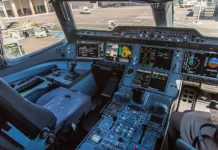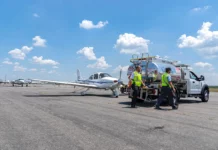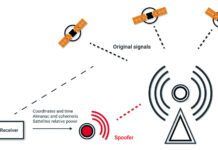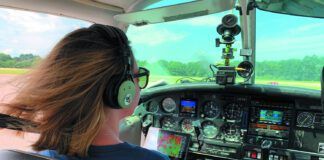Cirrus has been flying a Vision jet since 2008, but the first copy of the final production version flew for the first time on March 24. The jet is one of three conforming flight-test aircraft that will complete the flight-test regime, with deliveries expected to start late next year. Cirrus chief test pilot Mike Stevens flew the jet for an hour after takeoff from Duluth (Minn.) International Airport, and said it “handled and performed very well and all systems functioned properly, just what you want in a first flight.” The SF50 is a seven-seat, pressurized, single-engine jet, with a price of $1.96 million. Cirrus CEO Dale Klapmeier said the company has 500 reservations for the aircraft.
The FAA has promised to publish a draft set of rules later this year for integrating unmanned aerial systems into the national airspace, but as the technology develops, the pressure to allow commercial use of the aircraft has stepped up. The FAA lost a round in March when an NTSB judge overruled the FAA’s effort to slap a drone operator with a $10,000 fine for commercial operations. The NTSB judge said the FAA’s statements regarding drone use and limitations couldn’t be enforced because they hadn’t followed the full public rulemaking process. The FAA appealed that decision.
After three years on hiatus, the Red Bull Air Races are back. Defending champion Paul Bonhomme of the U.K. edged out archrival Hannes Arch of Austria to win the first event in the series, held in Abu Dhabi. “There was huge pressure out there and it was so much work to get back here,” said Bonhomme. Some of that pressure came from 30-year-old Pete McLeod, of Canada, the youngest pilot in the field, who came in third. McLeod is among the pilots who benefited from rule changes that put more emphasis on pilot skills than team budgets to do well in the races. There will be two races in the U.S. — Fort Worth, Sept. 6-7, and Las Vegas, Oct. 11-12.
Despite much outrage, a court challenge, and months of negotiation, the EAA has settled with the FAA and agreed to pay the expenses of air traffic controllers who work the tower for the AirVenture fly-in at Oshkosh. “This ends the uncertainty that began with the FAA’s sudden assessment of ATC fees for the 2013 event and the potential that air traffic support might not be provided this year or in the future unless such fees were paid,” EAA said. The costs, which EAA estimates will total $475,000 per year for the first two years, will be folded in to the overall expenses for the event. EAA said they will “make every effort to ensure that the impact is minimal” on visitors and vendors.
A report by the federal Government Accountability Office found that regional airlines, but not yet the major airlines, are having trouble finding qualified pilots, for a variety of potentially complex reasons. The analysis found that there may be enough trained pilots to fill the expected job openings over the next decade, but many of them may either find jobs abroad or work in other industries where the pay is much higher. The GAO surveyed 12 regional airlines, and 11 of them said they failed to reach their recruitment goals last year. The report recommends that airlines might consider training their own pilots and improve wages, benefits and working conditions to attract qualified applicants.
The latest federal budget proposal includes a bid to establish a surcharge for air traffic services of $100 per flight for jet aircraft…Fantasy of Flight, a long-time aviation attraction in central Florida, has closed for “re-invention”…A California man was sentenced to 14 years in prison for pointing a laser at a police helicopter…NTSB chair Deborah Hersman is leaving to take a job as president of the National Safety Council…Eclipse Aerospace delivered its first factory-new E550 jet…Breaking news in general aviation can be found at www.avweb.com.




